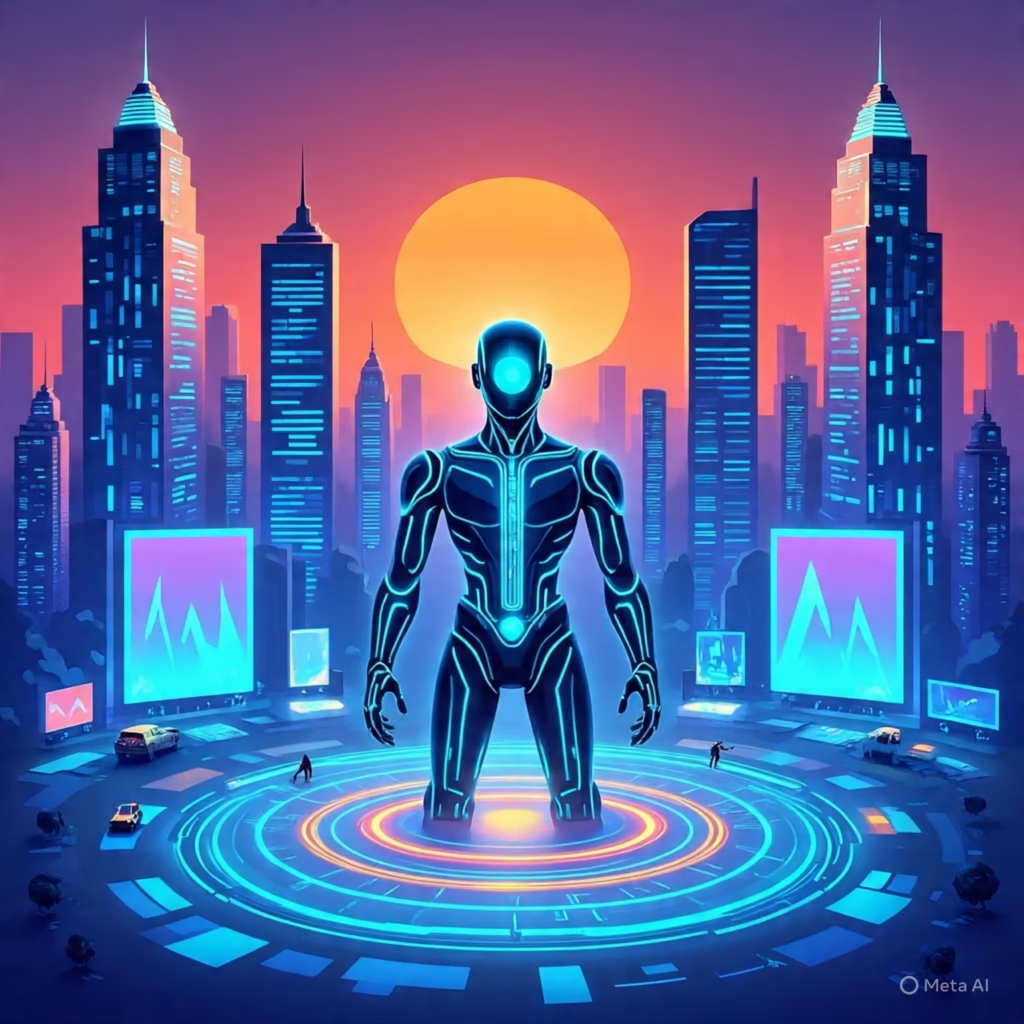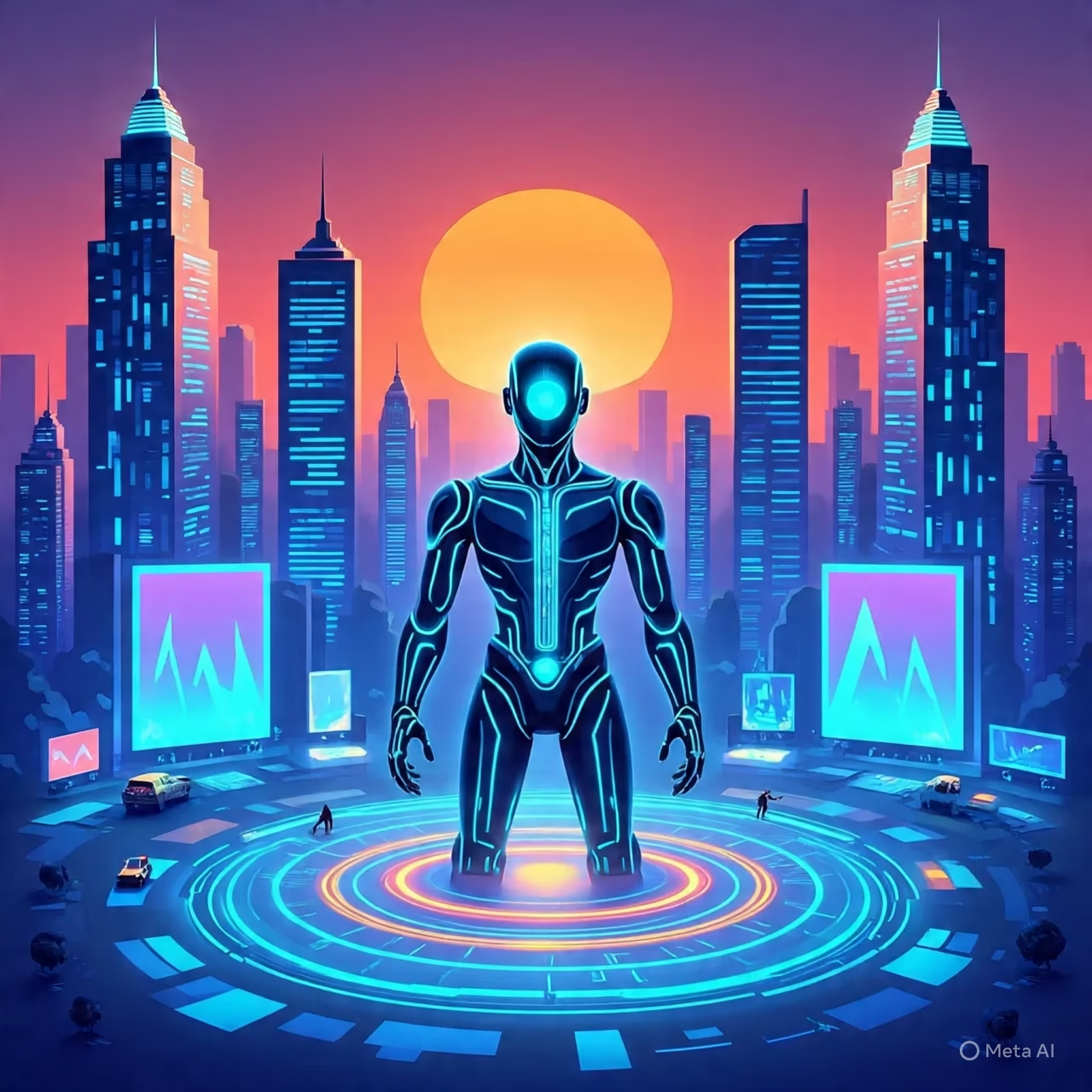
Introduction
The AI creativity Fusion of Art and Algorithms
Artificial intelligence is no longer just a technological tool—it’s a creative partner. From AI-generated paintings that sell for thousands to music composed by machine learning models, creativity in the US is driving a revolution in how we define art and imagination.
American innovators, from Silicon Valley startups to Hollywood studios, are using AI to push creative boundaries—producing art, films, fashion, and design that captivate audiences worldwide. But how exactly is reshaping the creative landscape, and what can the UK learn from these groundbreaking developments?
Let’s explore how -driven creativity is transforming the global arts scene, powered by American innovation and imagination.
The Rise of AI Creativity in the US
In the United States, AI has become a catalyst for artistic reinvention. Technologies like generative AI, neural networks, and machine learning now assist artists, filmmakers, and designers in conceptualising and producing works once thought impossible.
How AI creativity Is Transforming Art, Music, and Design
1. AI in Visual Arts: From Canvas to Code
AI-generated art is one of the most striking examples of innovation in the US. In 2018, Christie’s sold an AI-generated portrait, “Edmond de Belamy,” for $432,500, sparking global conversation. Since then, American artists and tech companies have continued to explore this frontier.
tools allow creators to blend photography, painting, and abstract art seamlessly. Platforms like Artbreeder and NightCafe Studio let artists collaborate with algorithms, crafting unique styles that merge human intuition with computational creativity.
2. AI in Music: Composing the Soundtrack of the Future
Music is another realm where American innovators are harnessing creative power. Machine learning algorithms can now compose music that adapts to mood, tempo, and even lyrical themes.
Artists like Grimes and Taryn Southern have already released albums created in collaboration with AI. Startups such as Endless and Boomy enable anyone to produce studio-quality tracks using AI, democratising music production.
UK musicians are following this trend too, with producers integrating tools like LANDR (for mastering) and Soundful to streamline production. It’s a creative exchange where American leadership inspires British innovation, transforming the global soundscape.
3. AI in Film and Entertainment: Reinventing Storytelling
Hollywood has always been a hub for technological advancement—and now, AI is reshaping the film industry from script to screen. Tools like ChatGPT, Runway ML, and Synthesia enable filmmakers to generate scripts, edit footage, and even create realistic characters digitally.
Studios use to predict audience reactions, tailor marketing campaigns, and design visual effects. For instance, Disney and Warner Bros. leverage to enhance post-production and analyse story arcs, ensuring films resonate emotionally.
In the UK, the BBC and Pinewood Studios are exploring similar tools for scriptwriting and production—further evidence of how creativity in the US is setting a global benchmark for storytelling innovation.
4. AI in Design and Fashion: The Next Frontier of Style
The fashion industry is undergoing a digital makeover, led by AI-driven design labs in the US. AI can now predict fashion trends, generate virtual garments, and even model outfits in real time.
Brands like Nike, Levi’s, and The Fabricant use to create sustainable, data-informed designs. In Los Angeles, designers employ AI to visualise entire collections before they’re physically made, reducing waste and production costs.
The ripple effect is reaching the UK too. British fashion houses, including Burberry and Stella McCartney, are integrating to enhance creative processes and sustainability—bridging tech with textile artistry.
Real-World Examples of AI Creativity in the US
Refik Anadol’s Data Sculptures: The Turkish-American artist uses and data visualisation to transform architectural spaces into moving art. His installations at MoMA and Walt Disney Concert Hall are mesmerising displays of machine-driven beauty.
Google Magenta Project: A US-based research initiative exploring how AI can create music, paintings, and poetry, pushing creative beyond automation into true artistic exploration.
Runway ML and the “AI Film Festival”: Celebrating short films made entirely with AI, this US event highlights how creative professionals are blending storytelling and machine learning to redefine cinema.
Each of these innovations illustrates how creativity in the US isn’t just a trend—it’s a new era of art where imagination meets intelligence.
The Ethical Debate: Can AI creativity Be Truly Creative?
Despite the excitement, there’s a growing debate about authorship and originality. If produces a masterpiece, who owns the rights—the coder, the user, or the machine?
In the US, copyright laws are evolving to address these questions. The US Copyright Office recently clarified that purely AI-generated works are not eligible for protection unless there’s substantial human input.
In the UK, similar discussions are underway. Artists and policymakers are examining how to balance innovation with intellectual property rights. This cross-Atlantic dialogue underscores the need for ethical frameworks that safeguard human creativity while embracing potential.
The Global Impact: How the UK Benefits from US AI Creativity
The influence of creativity in the US extends far beyond its borders. The UK’s creative industries—from film and design to advertising—are adopting AI-powered tools developed by American firms.
For instance, UK-based marketing agencies use AI models trained in the US to predict audience engagement and design visually compelling campaigns. London’s creative tech startups frequently collaborate with American companies to develop immersive art installations and virtual fashion shows.
This synergy fosters a transatlantic creative ecosystem—one where British artistry meets American innovation, inspiring a future of limitless possibility.
Conclusion: The Future of Creativity Is Human + Machine
The story of AI creativity http://AI creativity in the USis one of collaboration, not competition. Machines may generate ideas, but it’s human artists who bring emotion, context, and meaning.
As American innovators continue to redefine artistic expression, the UK stands to gain from this wave of creativity—adopting tools, ethics, and inspiration that will shape the next generation of artists.
👉 Want to explore how AI is reshaping global creativity? Dive into more viral stories at www.manyviral.com or reach out at hello@manyviral.com.
Call to Action
Follow us on social Media, and get in touch with us on Blogs@manyviral.com
FAQs
1. What is AI creativity in the US?
AI creativity in the US refers to the use of artificial intelligence in art, music, film, and design—enabling creators to collaborate with technology for innovative outcomes.
2. How are American artists using AI?
US artists use AI tools like DALL·E, Runway ML, and AIVA to generate digital art, compose music, and design interactive experiences.
3. What impact does AI have on traditional artists?
AI expands creative potential rather than replacing human artists, offering new tools to enhance storytelling, visualisation, and artistic experimentation.
4. Are there ethical concerns around AI creativity in the US?
Yes, debates centre on authorship, ownership, and authenticity. The US Copyright Office is actively revising laws to address AI-generated works.
5. How is the UK influenced by AI creativity in the US?
The UK adopts many American-developed AI tools for film, design, and marketing, creating a vibrant exchange between British creativity and US innovation.

Leave a Reply